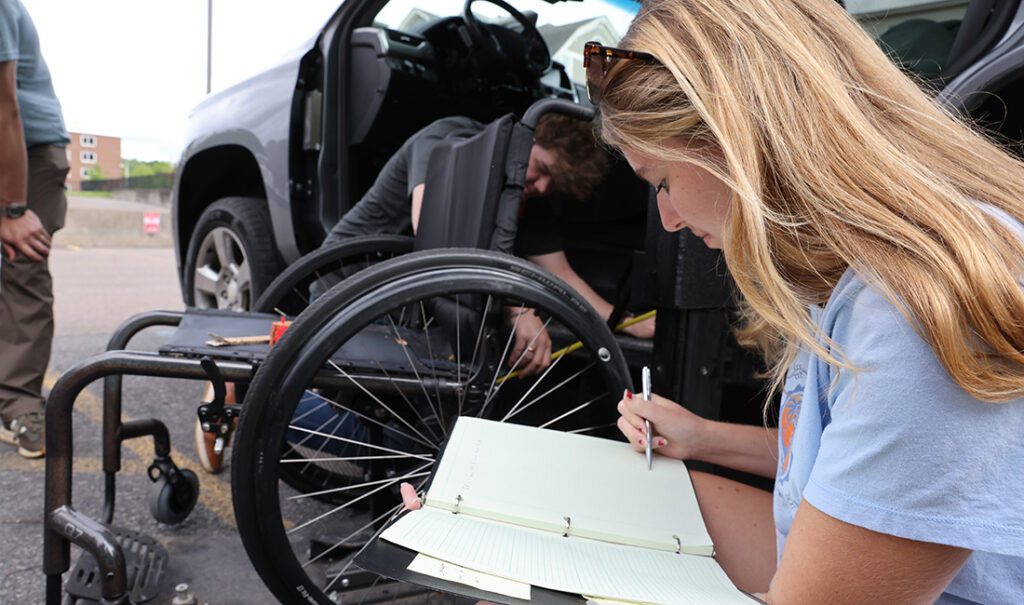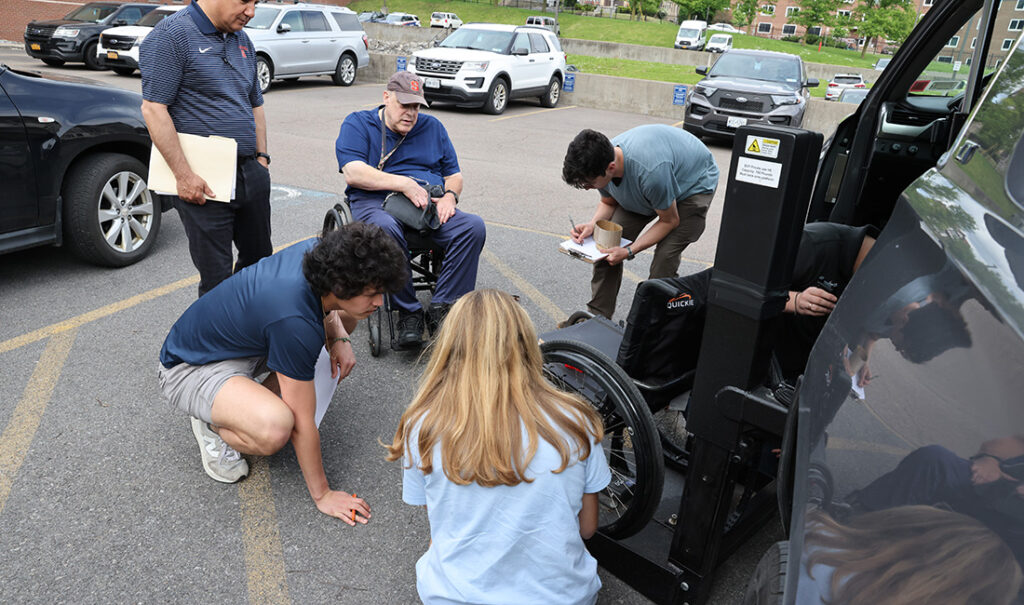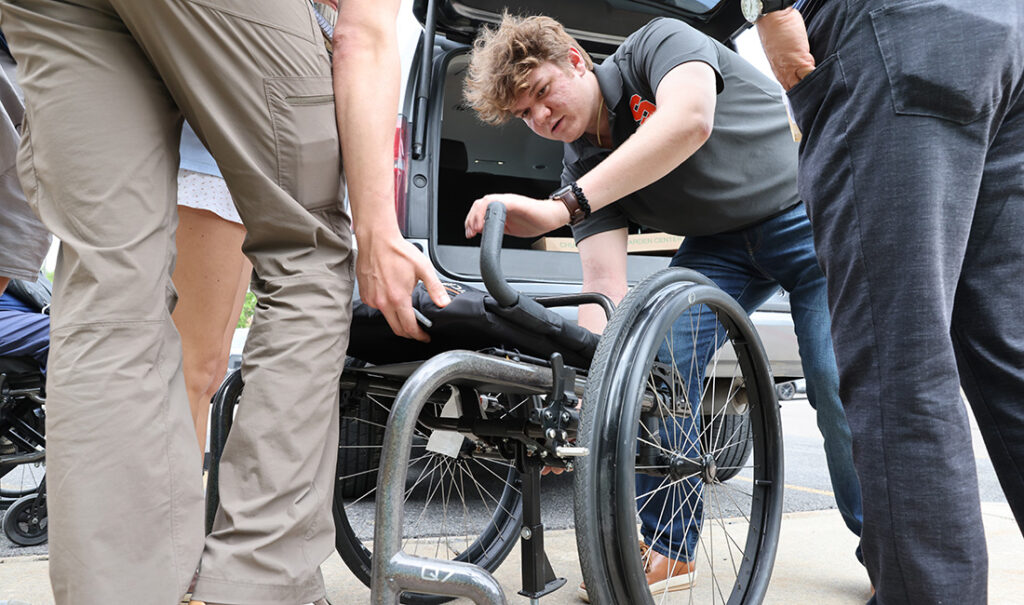
Former Syracuse University student Jim DaRin is one of many wheelchair users who rely on adapted vehicles to drive. These vehicles are equipped with a docking system designed to secure the wheelchairs in place while users focus on the road. However, even when the wheelchair is locked in, it’s not completely secure, causing DaRin to move back and forth while driving.
“The docking system moves and I’m rocking back and forth. I’m paralyzed from my waist down and have my hands on the steering wheel and throttle. It’s not secure or safe,” says DaRin. “The wheelchair’s pin also has a tendency to get caught on certain surfaces and the bolt drags on the pavement.”
DaRin is far from the first to complain about docking systems for adapted vehicles, but very few attempts have been made to fix these issues. That’s when he reached out to engineering students Davis Hood ’26 (electrical engineering), Jennifer Mason ’26 (mechanical engineering), Matthew Pinto ’27 (biomedical engineering), and Carter Thompson ’26 (aerospace engineering) to explore ways to improve his docking mechanism.
“I showed them the challenge I was having and the problems with my current docking system,” DaRin says.

As part of Invent@SU, a six-week summer program where student teams prototype, design and pitch original devices to judges, Hood, Mason, Pinto and Thompson created MagniClaw, a device that securely locks wheelchairs in moving vehicles. Their device has a lightweight bar attachment on the back of the wheelchair and a docking mechanism that holds a clamping and electromagnet.
“We’ve gone through multiple different design iterations, and we are always trying to keep in mind Department of Transportation standards,” says Hood. “Our device is easy to use, has a universal design, and can go on a majority of manual wheelchairs.”

MagniClaw’s lightweight attachment can easily be connected to wheelchairs using two small clamps. Once attached, the user can connect to the docking frame. The attachment has a steel plate in the center that interacts with the electromagnet to securely hold the wheelchair in place.
“Our device has a clamping mechanism. With this, wheelchair users can back into clamps without any extra input from the control center and the clamp’s shape provides enough security for the electromagnet to turn on,” says Pinto.
The electromagnet, which holds the wheelchair in place, can pull up to 600 lbs. and is activated by a remote. The remote has a Bluetooth feature that can communicate whether the electromagnet is on or off.
“All wheelchair users have to do is back up and the system gets locked in, holding them in place until they press a button that activates the electromagnet. They’re held for the car ride, and when they’re done, they press a button to release the electromagnet and they can roll away freely,” says Mason.
MagniClaw’s hitch-less design and customizability not only set it apart from competitors but also provide more freedom and mobility for wheelchairs with an easier docking system. They showcased their original device at Invent@SU’s final presentations to a panel of 14 expert judges and guests, including faculty, staff, Dean Cole Smith, Syracuse University Life Trustee Bill Allyn, and program supporter Mike Lazar. The team tied for second place, winning a cash prize of $1,200.
“It was nice to have a broad spectrum of engineers in our group. It also feels great to help Jim out,” says Thompson.
“My previous docking system was not good. Their system is a hundred times better,” says DaRin. “It’s much more safe and secure. The potential for MagniClaw is huge.”
“Mr. Jim Darin, a former student of Syracuse University, approached me with a problem that he hoped an Invent@SU team could solve,” says Kenneth and Mary Ann Shaw Professor of Practice in Entrepreneurial Leadership Alex Deyhim. “It was amazing to watch the students work directly with Mr. Darin to design and prototype MagniClaw, a magnetic wheelchair docking system that could be helpful to the millions of Americans who use wheelchairs full-time. This project is a wonderful example of what our students can accomplish when they work across engineering disciplines.”

